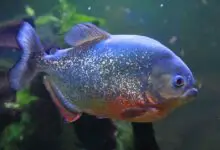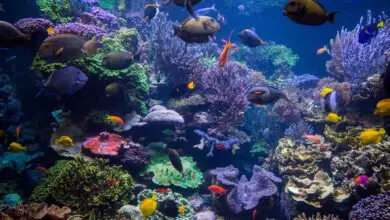Optimal Water Changes for Reducing Fish Stress and Disease

Nothing freshens up an aquarium like a nice water change. But they must be performed with care to avoid stressing or shocking your fish. The proper frequency, volume, temperature, and water treatment are key for healthy, happy fish.
Join us as we explore the ins and outs of low-stress water changes. You’ll learn procedures and best practices to promote a clean, flourishing tank environment. Time to roll up your sleeves and dive in!
Why Partial Water Changes Are So Important
Before getting into the specifics, let’s review why regular partial water changes are essential:
- Removes dissolved waste – Fish excrete ammonia and other nitrogenous compounds into the water which are toxic at high levels. Water changes dilute these.
- Replenishes minerals – Fish absorb beneficial minerals from their environment and need these regularly topped up.
- Stabilizes pH – Fish waste and some filtration processes cause pH to drift over time. Water changes reset optimal pH.
- Clears up haze – Tiny suspended particles make water appear cloudy. Changing water helps clarify it.
- Brings in fresh nutrients – Old tank water lacks minerals and elements fish need. New water replenishes these.
- Lowers nitrate – The end product of the nitrogen cycle, nitrate accumulates without partial water changes.
- Improves oxygenation – Stagnant tanks have less surface gas exchange. New water elevates oxygen levels.
- Resets allelopathic compounds – Compounds released by some plants inhibit fish growth over time. Water changes clear these out.
The frequency and volume of water changed depends on factors like stocking levels and tank size. Let’s explore how to find the right regimen for your aquarium.
Determining Ideal Water Change Frequency and Volume
There are a few calculations aquarists use to determine suitable water change frequency and amounts:
- For freshwater tanks – Change 10-20% of the water weekly in a lightly stocked tank. Up to 50% weekly for a heavily stocked community tank.
- For saltwater tanks – 10-15% biweekly or monthly for fish-only tanks. 20-30% weekly or biweekly for reef tanks.
- Percent of tank volume – Change 15-25% of total tank volume weekly for lightly stocked freshwater tanks, or 10-20% for marine. Up to 40-50% for heavy stocked community freshwater tanks.
- Percent of filter capacity – Change up to 50% of a canister filter’s volume weekly, or 25% of a sump filter’s volume.
- Gallons per inch of fish – For freshwater, change around 0.5-1 gallons per inch of fish length weekly.
Test your tank water to determine if more frequent changes are needed to keep nitrate and organics under control. Track dissolved solids with a TDS meter as well. Adjust volume and frequency based on your tank’s needs.
Now let’s get into the step-by-step process of gravel vacuuming during a water change, which is critical for removing waste.
How to Thoroughly Clean Substrate During Water Changes
Gravel vacuuming should be done during water changes to remove debris, uneaten food, and hidden gunk. Here is the process:
- Use a specialty aquarium gravel vacuum with a siphon bulb and tubing. Make sure siphon end has a guard to avoid catching fish.
- Start a siphon by squeezing bulb several times while siphon end is in tank water above the gravel. Once water flowing, place end gently in gravel.
- Slowly move vacuum across bottom, disturb gravel with tip to dislodge debris. Siphon up this dirty water and discarded.
- Work across entire tank, including corners and under decorations. Target 25-50% of gravel per cleaning.
- Place hand over siphon end when moving between areas to avoid breaking prime.
- Take care not to deeply dig into gravel or siphon up substrate. Gentle disturbing is ideal.
- Continue process until target water volume is removed. Discard displaced substrate if stirred up.
Thorough gravel cleaning during routine water changes removes hidden debris and waste. Now let’s look at preparing tap water before adding it to your tank.
Treating Tap Water Properly Before Introducing Into the Tank
Tap water must be treated and adjusted before adding it to your tank during water changes. Here are the steps involved:
- Use water conditioner to neutralize chlorine and chloramines. Add correct dose to new water and let sit as instructed.
- Adjust temperature – raise or lower to match tank water temp. Use heater or floating ice bottles.
- Use pH adjusting chemicals if needed to stabilize at ideal levels based on fish species. Let fully dissolve.
- Consider products that introduce beneficial minerals or act as a slime coat protectant for fish.
- Test parameters like pH, GH, KH, ammonia after treating to confirm safety before adding.
- Use drip acclimation over several hours if new water parameters vastly different than tank water.
Properly treated replacement water will be safe for your fish and inverts. Now let’s go over some best practices for minimizing temperature fluctuations.
Techniques to Prevent Temperature Shocks During Water Changes
Dramatic temperature shifts can severely stress fish. Here are some precautions to take:
- Use a sink or spare tank for preparing new water, not cold straight from the tap.
- Purchase an aquarium thermometer and monitor temperatures frequently.
- Feel temp of new water with your hand and compare to tank to estimate differences.
- Float a sealed bag of new water in the tank for 30 mins so temperatures can equalize.
- Only change water late in day when temperatures are stable, not early morning.
- Limit water changes to 25% or less of tank volume at a time.
- If large discrepancy exists, use drip acclimation over several hours to adjust.
Avoiding rapid 10°F+ changes is key. Small, gradual temperature adjustments are well tolerated. Now let’s examine pH stability strategies.
Maintaining Proper pH When Performing Water Changes
pH often shifts when performing frequent large water changes. Here are some tips for stability:
- Know your source water pH from municipal testing reports or personal testing.
- Monitor tank pH routinely with a quality electronic meter or test strips.
- Determine ideal pH for your fish species and aim for consistency and small gradual changes.
- Use pH adjusting chemicals on source water a day prior to water change for stable readings.
- Change only 10-25% of tank water at a time if fluctuations are an issue.
- Use crushed coral substrate or chemical filtration media if pH tends to drop between changes.
- Add pH buffering products like Seachem’s Neutral Regulator for stability.
Careful observation and pre-treatment are key to minimizing pH swings during water changes. Next we’ll look at organics removal.
Targeting the Removal of Excess Organics
Over time, excess dissolved and suspended organics accumulate in tanks. Strategically changing more water can help:
- Increase water change volume to 40-50% weekly if nitrates are steadily climbing.
- Add chemical filtration media like activated carbon, resins, and oxidizers to remove some organics.
- Use a protein skimmer rated for your tank size if appropriate. Helps pull out organics.
- Add fast growing plants which uptake some forms of organic waste to assist filtration.
- Use ozone or UV sterilization to aid in breaking down organics if tank size justifies the equipment.
- Test total dissolved solids (TDS) periodically. Aim for slow steady decline after changes.
- Assess feeding amounts, stocking levels, and sources of organics if reduction needed. Remove sources.
Targeting organics through larger, more frequent water changes can help clear up chronic issues. Now let’s examine helpful equipment.
Useful Equipment to Automate Parts of Water Changes
Certain devices can automate aspects of water changes to save time and effort:
- Automatic Fish Tank Siphon – Starts siphon process electronically at the push of a button. No manual effort.
- Battery Backup Air Pump – Maintains oxygenation and surface agitation during power failures that happen during water changes. Prevents disasters.
- Digital Aquarium Tubing Pump – Pumps water to drain and from refill buckets. No siphoning needed. Allows precise volume.
- Submersible Aquarium Heater – Keeps replacement water at ideal temperature during the fill process. Prevents shocks.
- Sink Tap Water Filter – Removes contaminants like chloramines during initial source water treatment before adding to tank.
- Python No Spill Clean and Fill – Attaches to sink faucet for easy draining and refilling. No buckets needed.
Look into these and other handy tools to optimize your unique water changing workflow.
Keys to Stress-Free Water Changes
To summarize, here are the key steps for successful low-stress water changes:
- Plan routine partial changes based on tank size, stocking level, and filtration capacity
- Use gravel vacuums to remove debris, uneaten food, and hidden waste
- Properly treat replacement water for chlorine, temperature, and pH
- Monitor parameters closely and make adjustments slowly and gradually
- Increase volume and frequency if organics are accumulating
- Utilize equipment that automates draining, filling and temperature regulation
With some planning and routine testing, water changes are easy. Your fish will thank you for the clean, refreshed environment!







